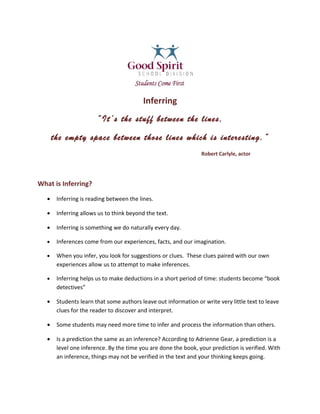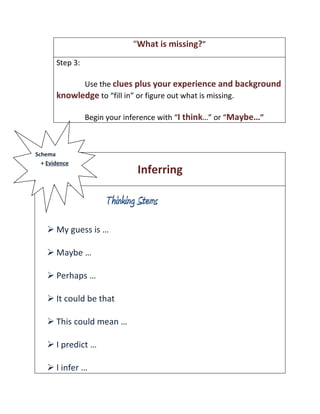The document discusses the concept of inferring, which is reading between the lines and using clues and background knowledge to determine information not explicitly stated. It provides tips for teaching students to infer, such as using posing and word clues games. Students are encouraged to look for clues, determine what is known and unknown, and use their experience to fill in missing information. Strong inferences are tied to evidence from the text. The connection between questioning and inferring is also explored, with higher-level questions leading students to inferential thinking.





